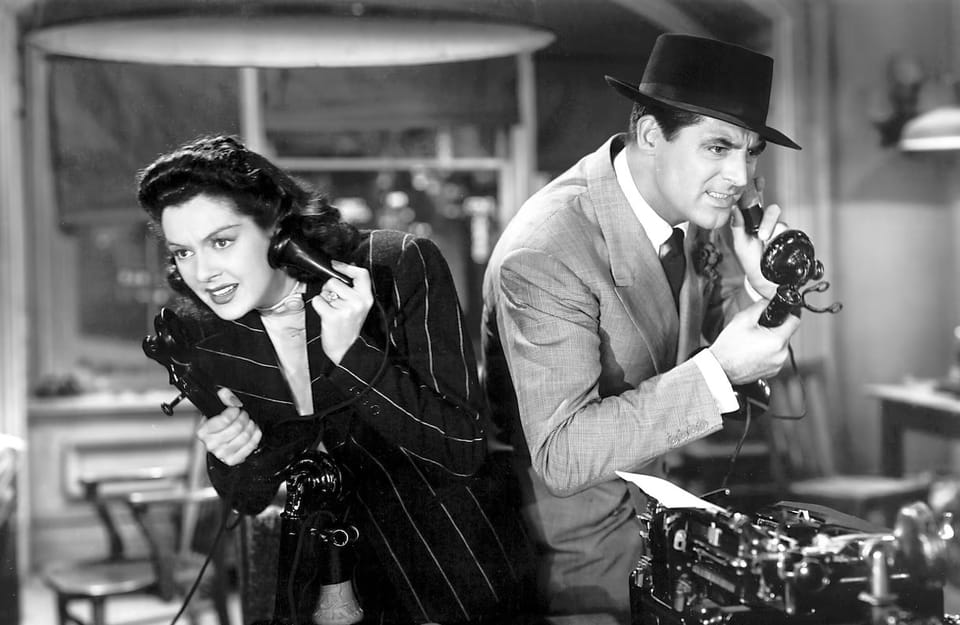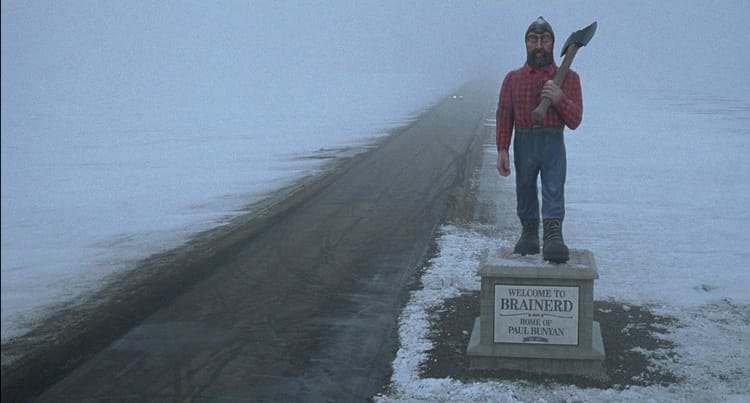How I write (hopefully) effective dialogue

Woodworking has been out for nearly six months now, and if there's one thing both the bad reviews and good reviews can agree on, it's that the dialogue is at least pretty good. I take great pride in this! It probably reflects my screenwriting roots, but I really do work hard to make sure the dialogue in my projects sounds like stuff that people might really say, even if it's necessarily heightened by the fact that it takes place within a fictional context.

As such, the main craft question I've started getting from young writers is how to write effective dialogue that illuminates character and ideally moves the plot along a little bit. I don't know that my advice will prove all that useful to everybody, as it involves a lot of screenwriting knowhow that I made backwards compatible with prose fiction, but some people seem to have appreciated it. So here are seven tips for writing more effective dialogue!
Standard caveat: As with all writing advice, you should take the following with every single grain of salt you can find. If none of it works for you, please continue doing what you find best, and if you are a writer who does not terribly care about dialogue, continue on your merry way! Several of my favorite books of all time contain no dialogue to speak of. Everybody's free to wear sunscreen!
Note: This post is adapted from a short lecture I gave to an Intro to Writing Fiction class.
1) Imagine someone saying your words
All of my advice on writing dialogue – regardless of which medium you're writing it for – boils down to the above. Thanks to working on Arden and Yellowjackets, I have gotten used to imagining actors saying the dialogue that I write, but you could imagine just about anybody doing so. Better, you could read it out loud yourself to see where it starts to fall apart on your tongue. Even people who are very clever tend to speak in a way that comes easily to them. Reading the words aloud will make clear where you need to do some work in that regard.
2) Cadence is more important than content
To state the obvious, good dialogue rarely involves characters simply saying what they're thinking straight out. Yes, sometimes, you just need to bite the bullet and write a line or two in that fashion, but for the most part, people are not just opening their mouths and letting their inner monologues emerge unscathed. It's important that your characters say interesting and unintentionally revealing things!
But what really sets great dialogue apart to me is how someone says what they're saying. Every single person on this planet has their own rhythm and cadence to their speech patterns, and the more you can make your characters feel like their cadences are different, the more you'll be able to make them sound like different people. For instance, when I was writing Arden, Michelle Agresti (who plays Bea) has a very different cadence from Tracey Sayed (who plays Brenda), and they both have very different cadences from Charlita Gaston (who plays Pamela). By writing to those specific cadences, I could make the characters sound different on the page, and then the actors could take that effect and bolster it 200 percent.
Of course, it's easy to say "Cadence is everything" when you know actors are going to deliver your dialogue! So here's some slightly more practical advice for our prose fiction pals. Too often, people hear "cadence" and think "vocabulary," but if you've ever listened to, say, Elon Musk and Taylor Swift speak extemporaneously, then you know that two people with roughly similar vocabularies can sound wildly different when speaking. To that end, it's important to think about how people talk in terms of the basic tempo and musicality, almost like you're evaluating a piece of music. In Woodworking, Erica tends to talk in very long sentences that attempt to convey two or three ideas simultaneously. Abigail, meanwhile, is much blunter and more to the point, befitting a teenager who's making up for lost time. Abigail's raw vocabulary is not that different from mine, honestly, but the way she uses it feels different, which allows me to get away with her seeming like a teenager.
Become a paid subscriber: You'll get access to two weekly newsletters only paid subscribers receive, the Episodes Discord, and almost a decade of archives. Sign up for as little as $5/month below!
3) Eavesdrop
My top advice for getting the voice of other people in your head is to write with an actor's voice in mind (see above), but I also accept that not everybody has been doing this for years and years. To that end, my wife (who has the best ear for dialogue of anyone I know) always recommends eavesdropping or, at the least, paying close attention to the various rhythms of conversation partners when you're at, say, a dinner party or a family gathering.
But, really, she thinks you should eavesdrop. I know it's rude! But she doesn't know that!
4) Think about how your dialogue looks on the page
This advice goes triply for prose writers, who don't have their dialogue immediately set off in the way it is in a screenplay. Even so, a dialogue scene in any format has an internal rhythm that the reader should be able to ascertain visually. Is there a big chunk coming up? Then you know one character is going to speak for a while! Are we in for lots of one-line paragraphs? Then we must be in the midst of a fast-paced exchange. I talked a lot about cadence above, but the amazing thing about even half-assed dialogue is that it can force a certain kind of pace on the reader, which allows you to control their experience just a little bit more.
To that end, if you are a prose writer, I highly recommend reading screenplays and stage plays, and if you are any kind of fiction writer (including screenwriters), I highly recommend reading a lot of poetry, just to see how you can be emotionally affected by the mere layout of words on the page.
5) Dialogue is at its best when it's at least a little bit of a lie
People rarely say directly what they mean. They might think they're doing so, but human beings are great at lying to themselves and then spreading those lies outward to others. The old saying actions speak louder than words applies to fictional characters too! In a screenplay, the things the characters say and the things they do are effectively on two tracks. They might run in parallel for a time. They might occasionally intersect. They might go jetting off in different directions. But often, the most compelling characters are those who seem to constantly be saying the opposite of what they do. (See also: Tony Soprano, Don Draper, etc.)
In prose fiction, there's a whole other track to keep an eye on, which is the characters' inner monologues. Again, people don't just lie to each other; they lie to themselves all the time. Thus, even though interiority is a great tool to use to dig into why a character behaves the way they do, there will inevitably be certain things they're keeping from themselves. Dialogue, action, and inner monologue should rarely run exactly parallel to each other, unless you're writing a book where the forward momentum of the plot is the main thing that matters (which is cool!).
6) "Realistic" dialogue is just as stylized as stylized dialogue
There is a tendency sometimes to sneer at hyper-clever dialogue and insist that real people don't talk that way. To some extent, this is true. When I go to order coffee, I am rarely getting involved in weighty discussions about the fate of the world or even trying to share witty bon mots. I just want an americano! In reality, people often speak in sentence fragments. They use filler words like "um." They start and stop and reverse course in sentences all the time.
But stories written with dialogue exactly as it's spoken end up feeling just as stylized as, say, an Aaron Sorkin project because we're used to fiction – even the most realistic fiction – sanding some of life's rough edges off. So my advice is to not worry too badly about what's "realistic" if you're writing dialogue that you find interesting.
In particular, this is where the cadence of dialogue will be a life saver. One reason Aaron Sorkin's dialogue is so distinctive is because every character in his scripts speaks with very nearly the same rhythm and cadence. When he's on, that can feel absolutely wonderful. But I tend to be drawn to writers who write great stylized dialogue that, nevertheless, builds character differentiations. Joss Whedon (necessary Joss Whedon link) is a great example of someone who writes characters who all speak with similar cadences but have their own internal rhythms. A Willow line and a Buffy line were never exactly the same on Buffy, and dialogue from either would feel weird coming out of the mouth of Black Widow in The Avengers. At his best, Whedon wrote so specifically to certain actors that he could modulate his core voice in a way that his many (many) imitators never quite could.
7) Let your characters be as smart as they are capable of being
A few weeks ago, I was at the playground with my kid, and a girl (probably 8) was playing nearby with her brother (probably 4). The girl kept ordering her brother around, and the brother kept not listening, and it was really remarkable how slowly the girl started to sound more and more like a maternal figure than this kid's older sister. She was so clearly aping her mom because that was the one way she could think of to get him to pay attention, even if she wasn't conscious of that.
I take deep issue with the idea that people aren't capable of expressing themselves, even people who are not very articulate. When push comes to shove, the vast majority of people will express themselves in a way that gets across what they're thinking in as eloquent a manner as they are capable of, whether they're my 2-year-old, that 8-year-old girl, or my 80-something grandmother.
My point with this is only that in real life, people are constantly trying to express themselves the best way that they can. Your characters are as well. so why not let them say the best possible things they could? The best fiction gives characters a level of dignity, even if they're despicable, and part of that dignity stems from letting them express themselves.
I hope literally any of this was helpful! If you have other tips, please put them down in the comments (though you'll have to be a paid subscriber to do so).
Three things to read!
Here are three links I found well worth checking out.
- I've been linking to Jay Dragon a lot lately, but her post on imagining the "authorial voice" of things you write is something I think about a lot for my novels, even if she's talking about designing TTRPGs.
- Robert Daniels's look at a retrospective of post-World War II British cinema gave me a host of titles to add to my list and reminded me why he's a critic whose take I always appreciate.
- Priscilla Page digs into why 28 Years Later is such a beautifully vital film.
A Good Song
The free edition of Episodes, which (usually) covers classic TV and film, is published every other Wednesday, and the subscriber-supported edition of Episodes, which covers more recent stuff, is published every Friday. Paid subscribers also have access to the weekly Monday Rundown. This newsletter is written by Emily St. James, Libby Hill, and others. If you have suggested topics, please reply to the email version of this newsletter or comment (if you are a paid subscriber).





Member discussion